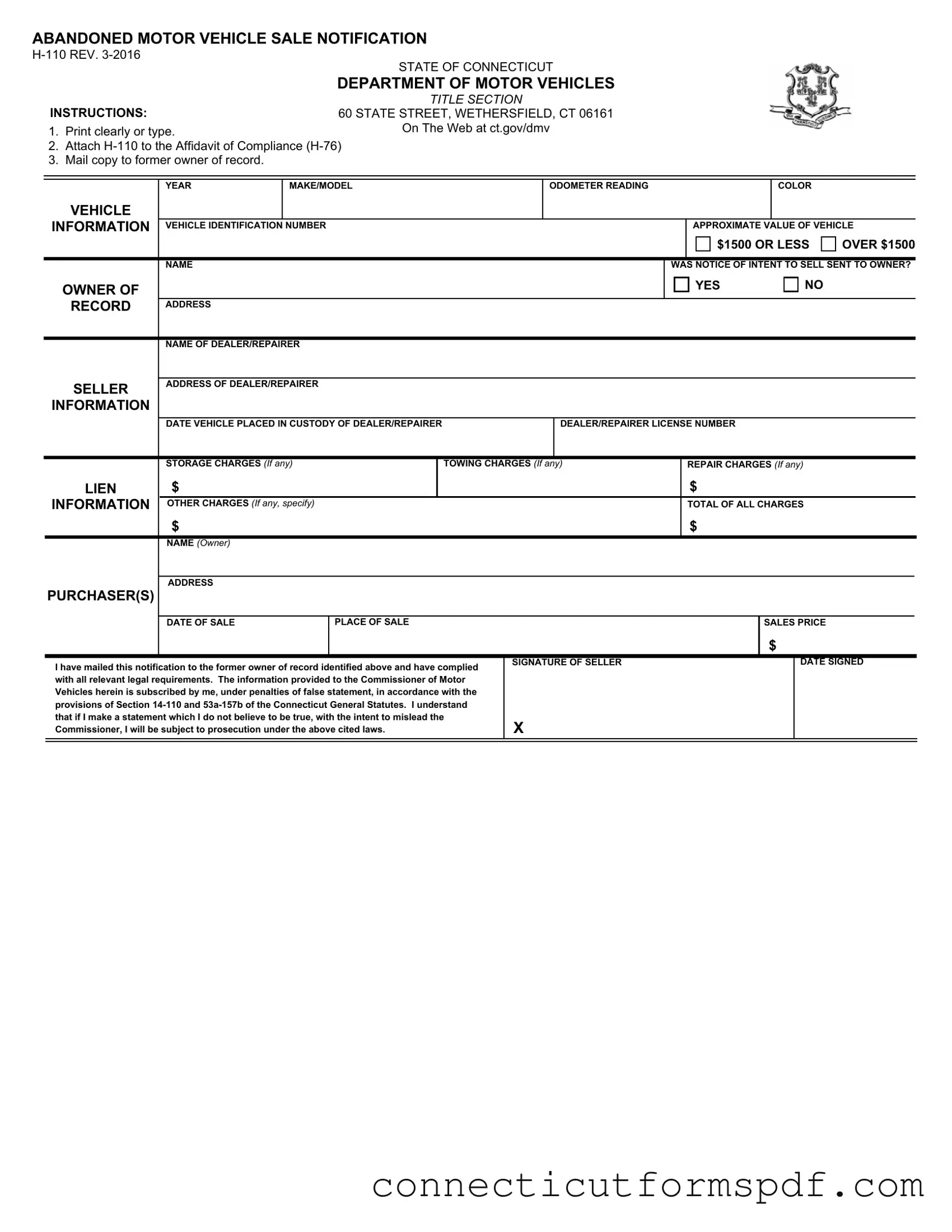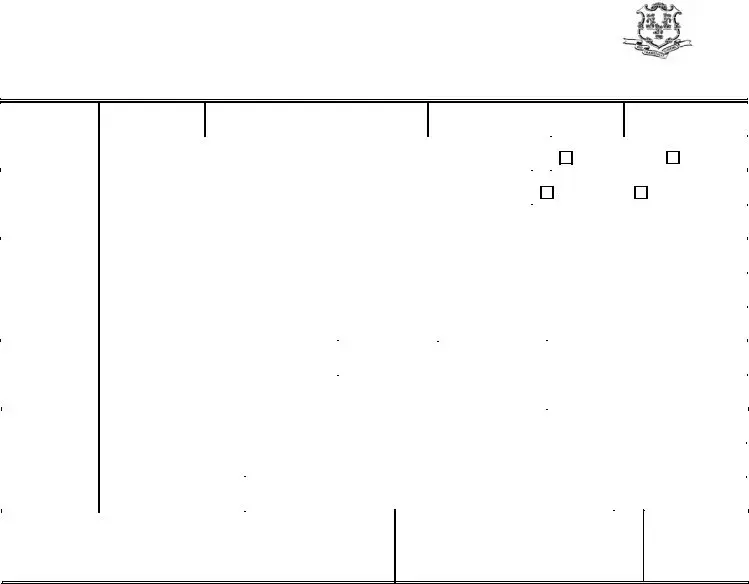What is the Connecticut H-110 form used for?
The Connecticut H-110 form is utilized to notify the Department of Motor Vehicles (DMV) about the sale of an abandoned motor vehicle by a dealer or repairer. This process is a legal requirement for vehicles deemed abandoned under Connecticut law. It ensures that the sale is recorded officially and helps in transferring the vehicle's ownership from the former owner to the new purchaser legally.
What should be attached to the H-110 form?
Along with the H-110 form, an Affidavit of Compliance (H-76) must be attached. This document serves as evidence that all legal steps required for declaring a vehicle as abandoned and proceeding with its sale have been followed. It includes proof of attempt to notify the former owner and any lienholders about the intent to sell the vehicle.
How do I submit the H-110 form?
Once completed, the H-110 form, along with the attached Affidavit of Compliance (H-76), should be mailed to the Department of Motor Vehicles' Title Section at the specified address. It's important to ensure that all information is clearly printed or typed and that the form is signed before mailing.
Is it required to notify the former owner of the vehicle?
Yes, it is a mandatory step to make a reasonable attempt to notify the former owner of record about the intention to sell the vehicle. This notification is part of the legal requirements to avoid any claims from the former owner after the sale has been completed. Documentation of this attempt must be attached to the H-110 form.
What happens if the vehicle's value is over $1,500?
For vehicles valued over $1,500, additional requirements may apply according to Connecticut law. This includes specific notification procedures to the former owner and any lienholders. The detailed procedure ensures that higher value vehicles are handled with due diligence and that all parties have a fair opportunity to reclaim the vehicle or address any outstanding issues before the sale proceeds.
What information is required on the H-110 form?
The form requires detailed information about the vehicle, including its year, make/model, odometer reading, color, and vehicle identification number (VIN). It also requires the approximate value of the vehicle, details of the dealer or repairer selling the vehicle, charges associated with the vehicle's storage, towing, and repairs, as well as information about the new purchaser, including the sale price.
Are there penalties for providing false information on the H-110 form?
Providing false information on the H-110 form is considered a serious offense under Connecticut law. The form itself reminds the seller that making a false statement with the intent to mislead the Commissioner of Motor Vehicles is punishable under specific statutes. Penalties can include fines and/or imprisonment, emphasizing the importance of providing accurate and honest information.
Can the H-110 form be submitted electronically?
As of the latest available information, the H-110 form must be submitted through mail to the DMV's Title Section. There may be updates or changes to this procedure, so it's advisable to consult the DMV's official website or contact their office directly for the most current submission guidelines.
What should be done if the former owner cannot be located?
If the former owner cannot be located after reasonable efforts, documentation of the attempts made should be provided with the H-110 form and the Affidavit of Compliance (H-76). This may include returned mail, attempted notifications through last known contact information, and any other efforts to reach the owner. The documentation should demonstrate that a genuine attempt was made to notify the former owner, fulfilling the legal requirements for selling the abandoned vehicle.

